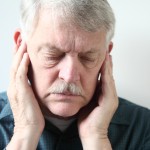
Temporomandibular joint disorders (TMD) are an important cause of non-dental oro-facial pain. Signs and symptoms of TMD are common in the population with estimates ranging from 12-65%. Manual therapy (MT) or orthopaedic manual physical therapy includes any hands-on treatment provided by physical therapists including moving joints in specific directions, muscle stretching and moving against a therapist’s resistance to improve muscle activation and timing. MT is considered to be a conservative method for the management of TMD. The aim of this review was to assess the effect of manual therapy (MT) in improving maximum mouth opening (MMO) and pain in subjects with signs and symptoms of TMD.
Methods
Searches were conducted in the Medline, Cochrane library, Web of Science, SciELO and Embase databases. Randomised controlled trials (RCTs) comparing an MT physical therapy intervention to a reference group (placebo intervention, controlled comparison intervention, standard treatment or other treatment) were considered. Key outcome measures were MMO and pressure pain threshold (PPT) of the masticatory muscles.
Two reviewers independently selected studies and abstracted data. The PEDro (Physiotherapy Evidence-Based Database) scale was used to assess the methodological quality of the studies. Owing to study heterogeneity meta-analysis was not conducted.
Results
- 8 studies were included.
- 7 studies were considered to have high methodological quality, 1 low quality. Mean PEDro score was 6.62.
- Studies varied in the number and frequency of therapy sessions.
- 2 assessed immediate effects with 6 assessing longer post treatment evaluations.
- There was moderate and low evidence that myofascial release and massage techniques are more effective than placebo or no intervention for MMO and pain outcomes respectively.
- There was moderate evidence that no significant difference exists between myofascial release and toxin botulinum for improvement on the same outcomes.
- There is moderate evidence that atlanto-occipital joint thrust manipulation is more effective than placebo in improving MMO in individuals with TMD.
- There is low evidence that C7-T1 thrust manipulation does not improve PPT in subjects with TMD when compared to placebo manipulation.
- In addition, an upper cervical mobilisation proposed showed high evidence on reducing pain and increasing PPT comparing to placebo.
- MT osteopathic technique protocols showed greater MMO, pain and PPT improvement when compared to a usual care group.
- 2 studies reported no adverse effects the remainder did not report.
Conclusions
The authors concluded: –
There is widely varying evidence that MT improves pain, MMO and PPT in subjects with TMD signs and symptoms, depending on the technique. Further studies should consider using standardised evaluations and better study designs to strengthen clinical relevance.
Comments
The authors have searched a wide range of databases and only included RCTs in this review. While 7 out of 8 of the studies are considered to of high methodological quality the authors note that only 4 have used the Research Diagnostic Criteria for Temporomandibular Disorders (RDC/TMD) as a diagnostic tool. The studies are also small ranging in size from 30-93 patients, only 3 of the studies used an intention to treat analysis and only 2 studies used sham MT in order to blind patients from the intervention. The authors also note in their discussion that the description of the MT techniques was not clear. These issues should be borne in mind when taking the reviews findings into consideration.
A Cochrane review protocol in available on this topic in the Cochrane library and we have covered a wide range of other systematic reviews on TMD (see links).
Links
Calixtre LB, Moreira RF, Franchini GH, Alburquerque-Sendín F, Oliveira AB. Manual therapy for the management of pain and limited range of motion in subjects with signs and symptoms of temporomandibular disorder: a systematic review of randomised controlled trials. J Oral Rehabil. 2015 Jun 7. doi: 10.1111/joor.12321. [Epub ahead of print] PubMed PMID: 26059857.
Craane B, De Laat A, Dijkstra PU, Stappaerts K, Stegenga B. Physical therapy for the management of patients with temporomandibular disorders and related pain. (Protocol). Cochrane Database of Systematic Reviews 2006, Issue 1. Art. No.: CD005621. DOI: 10.1002/14651858.CD005621.
Dental Elf – 15th May 2015 – Temporomandibular disorders: is botulinum toxin effective

Manual therapy improves temporomandibular disorders suggests review http://t.co/oBxH8fMa6l
Manual therapy improved maximum mouth opening in TMD http://t.co/oBxH8fMa6l
Manual therapy reduced pain in TMD suggests review. http://t.co/oBxH8fMa6l
Manual therapy improved TMD signs and symptoms. http://t.co/oBxH8fMa6l